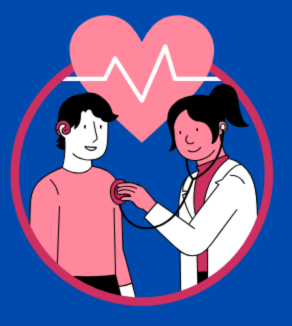Crohn’s disease is a long-term inflammatory illness that mostly affects the digestive system. It is categorized as ulcerative colitis’s counterpart, one of the two primary forms of inflammatory bowel disease (IBD). Although the exact cause of Crohn’s disease is yet unknown, a complex interaction of immunological, environmental, and genetic variables is thought to be involved.
This article will go into the complexities of Crohn’s disease, including its causes, symptoms, diagnosis, and treatments.
Causes :
The exact cause of Crohn’s disease is unknown, however it is assumed to be the result of a genetic predisposition, environmental triggers, and an abnormal immunological response. Individuals who have a family history of Crohn’s disease are more likely to develop the disorder, indicating a genetic link.
Environmental variables such as nutrition, smoking, and infections may also contribute to Crohn’s disease development by causing inflammation in the gastrointestinal system. Furthermore, immune system abnormalities, particularly an overactive immune response, are thought to play a significant role in the cause of Crohn’s disease.
Symptoms of Crohn’s disease :
Crohn’s disease can affect any portion of the gastrointestinal tract, from the mouth to the anus, but it most frequently affects the small intestine and the beginning of the large intestine (colon). Crohn’s disease symptoms can vary significantly based on the location and level of inflammation, but may include:
- Persistent diarrhea
- Abdominal pain and cramping
- Rectal bleeding
- Fatigue
- Weight loss
- Fever
- Loss of appetite
- Perianal disease (fistulas, abscesses)
These symptoms can range from mild to severe, and they may come and go over time, with periods of recovery followed by flare-ups of active disease.
Diagnosis :
Diagnosing Crohn’s disease typically involves a combination of medical history, physical examination, imaging studies, laboratory tests, and endoscopic procedures. A thorough evaluation is necessary to rule out other gastrointestinal conditions and to accurately diagnose Crohn’s disease.
Common diagnostic tests may include blood tests to assess inflammation and nutritional status, stool tests to check for infections and blood in the stool, imaging studies such as X-rays, CT scans, or MRIs to visualize the gastrointestinal tract, and endoscopic procedures such as colonoscopy or upper endoscopy with biopsy to examine the lining of the intestine and obtain tissue samples for analysis.
Types of Crohn’s disease :
Crohn’s disease is a complex ailment that manifests in a variety of ways, resulting in the classification of different types based on characteristics such as inflammatory location, disease behavior, and related consequences. The main types of Crohn’s disease are:
Location-Based Classification:
Ileocolitis : This is the most common type of Crohn’s disease, with inflammation in the ileum (the end of the small intestine) and colon (large intestine). Symptoms may include stomach pain, diarrhea, and weight loss.
Ileitis : This form of inflammation is localized to the ileum (the end of the small intestine). Symptoms may include stomach pain, diarrhea, and nutritional deficits.
Colitis : Colonic Crohn’s disease is characterized by inflammation of the colon (large intestine). Diarrhea, rectal bleeding, and a need for a bowel movement are all possible symptoms.
Gastroduodenal Crohn’s disease :This variety affects the stomach and the start of the small intestine (duodenum). Symptoms may include nausea, vomiting, and upper abdominal pain.
Behavior-Based Classification:
Inflammatory : This variety is characterized by inflammation of the intestinal lining without stricture or penetrating problems. Symptoms can vary, but they typically include abdominal pain, diarrhea, exhaustion, and weight loss. Inflammatory Crohn’s disease usually responds well to anti-inflammatory drugs and may even go into remission with treatment.
Stricturing : Stricturing Crohn’s disease is characterized by the development of scar tissue (fibrosis) in the gut, which narrows and obstructs the intestinal lumen.
Symptoms may include crampy stomach pain, bloating, altered bowel habits, and abdominal distention. Medication to minimize inflammation may be used in conjunction with surgery to remove strictures.
Penetrating (Fistulizing): Penetrating Crohn’s disease is distinguished by the creation of abnormal connections (fistulas) between different sections of the intestine or between the intestine and other organs.
Symptoms may include pus leakage, abscesses, discomfort, and swelling. Antibiotics, immunosuppressive drugs, biologic therapy, and surgical intervention to heal fistulas and abscesses are all options for treatment.
Complication-Based Classification:
Perianal Crohn’s disease : This variety causes inflammation and issues in the anus and perianal areas, including fistulas, abscesses, skin tags, and fissures.
Symptoms may include pain, swelling, pus or blood discharge, itching, and bowel movement discomfort. Treatment may include medicines, abscess drainage, and surgical techniques to repair fistulas and manage perianal illness.
Extraintestinal manifestations: Crohn’s disease can also affect other parts of the body outside the gastrointestinal tract, leading to various extraintestinal manifestations such as arthritis, skin rashes, eye inflammation (uveitis), and liver disorders (primary sclerosing cholangitis).
